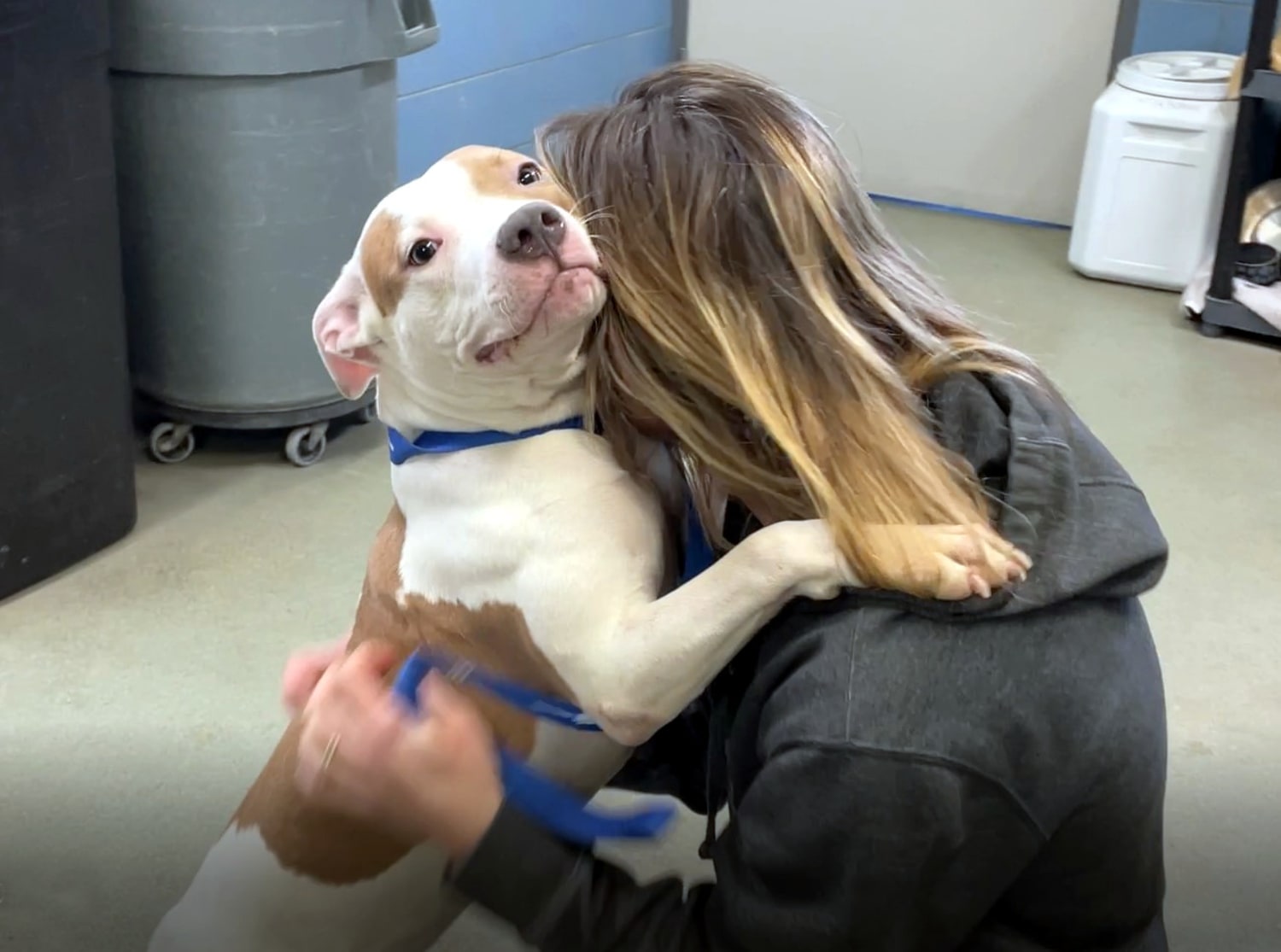In the past few weeks, three dogs and a tortoise arrived with their travel companions at various airports across the country. By all appearances, the pets were going to fly off with their humans. But at some point between check-in and boarding, their owners decided to leave the animals behind.
One dog was found tied to a pole outside the airport in Des Moines. The tortoise was discovered in a restroom at Harry Reid International Airport in Las Vegas. A puppy was abandoned by a departure gate at the same airport. Another dog was surrendered to airline employees at Charlotte Douglas International, bringing to mind an incident last summer when a young dog was handed over to airline workers in San Francisco.
“This is the wrong thing to do, morally and criminally,” said Joe Stafford, director of animal services with the Animal Rescue League of Iowa, which assisted in the rescue and care of the pit bull that the staff named Allie. “There are a lot of resources that can help owners in any given situation.”

Reports of these orphaned animals surfacing in such quick succession raise an alarming question: How often are people deserting their pets at airports?
“Animal abandonment has been around for a long time, but I don’t think we are in an epidemic of people abandoning their pets at airports,” said Holly Sizemore, chief mission officer with Best Friends Animal Society, an animal welfare nonprofit based in Utah. She shared one reason for the recent attention: “All things airlines have been in the news.”
A puppy was abandoned at an airport. Then a United pilot adopted him.
Allie was found tied to a pole outside Des Moines International Airport after her owner abandoned her. She was rescued by the Animal Rescue League of Iowa. (Animal Rescue League of Iowa)
In each of the aforementioned episodes, the travel community jumped in to help the animals in distress. Passengers and airline personnel joined forces with law enforcement and animal rescue operations to ensure the safety of the dogs — Allie, Penny, Polaris and Baby Girl — and Boeing the tortoise.
“People called the police department and were sitting with [Allie],” said Stafford, who recommends contacting police in animal abandonment situations. “No harm had come to her.”
The majority of pet owners probably won’t leave their animals anywhere, anyhow. “Most people who travel with their pets are prepared and want their pets with them every step of the way,” said Laura Sheehan, senior vice president of communications and legislative affairs with American Humane in Arlington, Va.
However, flying with a four-legged friend requires an extra degree of preparation. The stories of the four dogs and the tortoise are more than morality plays; they are instructive examples of how failing to take the proper steps before traveling with a pet can leave you both in a bind. Here are some takeaways from their tales.

Travel requirements for pets vary among airlines and countries, and protocols have changed during the coronavirus pandemic.
For example, U.S. carriers stopped allowing emotional support animals in the cabin in 2021. The same year, the Centers for Disease Control and Prevention temporarily suspended the importation of dogs from countries with a high risk of rabies. Polaris, the puppy surrendered at the San Francisco airport in August, had flown in from China, one of the countries on the list.
“It’s not just the airlines; it’s where you’re going, too. What are they allowing?” said Kelly Donithan, director of global animal disaster response with Humane Society International. “It all depends on the airline, the route and the destination.”
Start your research with the airline’s website, which will cover the carrier’s requirements, such as crate specs, breed restrictions, age minimums and cost, as well as country-specific regulations related to flying.
Airlines limit the number of animals permitted in the cabin, so make arrangements for your pet at the same time you book your own ticket. Carriers may not allow pets to fly in cargo during certain months or hours when the risk of extreme temperatures is high.

If you adopt a cat from a Vegas shelter, you can fly free on Frontier
For entry requirements, the Agriculture Department and the CDC are excellent resources. The State Department’s Pets and International Travel page offers a comprehensive overview, plus links to other agencies. The websites of foreign governments offer guidance and checklists, too. On Canada’s site, for example, you can plug in the type of animal, age and originating country, and a result pops up. For a pet dog, a traveler needs only proof of ownership and a rabies vaccination.
Penny was found abandoned by a departure gate at Harry Reid International Airport in Las Vegas. The 9-week-old puppy was rescued by the Animal Foundation. (The Animal Foundation)
Some states require a Certificate of Veterinary Inspection (CVI), or health certificate, that you must obtain within 10 days of travel. The USDA’s Animal and Plant Health Inspection Service has a list of state requirements.
“There are a lot of hoops to go through,” Sizemore said, “but, like anything with travel, the more you do it, the easier it gets.”
Lori Teller, president of the American Veterinary Medical Association (AVMA), warns against waiting till the last minute to plan your pet’s trip, especially because you might need to schedule vet visits and obtain hand-signed documents. She suggests starting preparations three to six months ahead for foreign travel, and a few weeks before for a domestic trip. And make copies of all documents.
Two of the recent incidents involved issues with pet carriers. In Charlotte, Baby Girl’s case was too large to slide under the seat. The owner could not afford the cargo transport fees, so she surrendered her senior beagle mix to an airline agent.
Allie’s owner showed up at the Des Moines airport with only a leash and harness, according to Stafford. The Newark-bound traveler had (wrongly) assumed that the airline would supply the gear. However, Stafford said, the owner could have contacted a shelter for assistance.

“They may sell you a good used crate or give you one if it came down to it,” he said.
The correct dimensions are critical. The animal must also fit comfortably inside. They should be able to lie down, stand up and turn around without bumping into the walls or roof. Their ears should not touch the top, either.
“Practice with your pet and see how he moves around,” said Donithan, who recommends Petmate carriers and kennels.
Ensure that your pet is microchipped and that the contact details are current. For an extra level of assurance, affix your contact information to the carrier or scrawl your details on the case with a Sharpie pen.
Penny’s only identifying accessory was a heart-shaped name tag. With little else to go on, the Animal Foundation in Las Vegas could not track down the 9-week-old puppy’s owners. Allie did not have identification, either. Stafford said they located her owner through airport security cameras.





